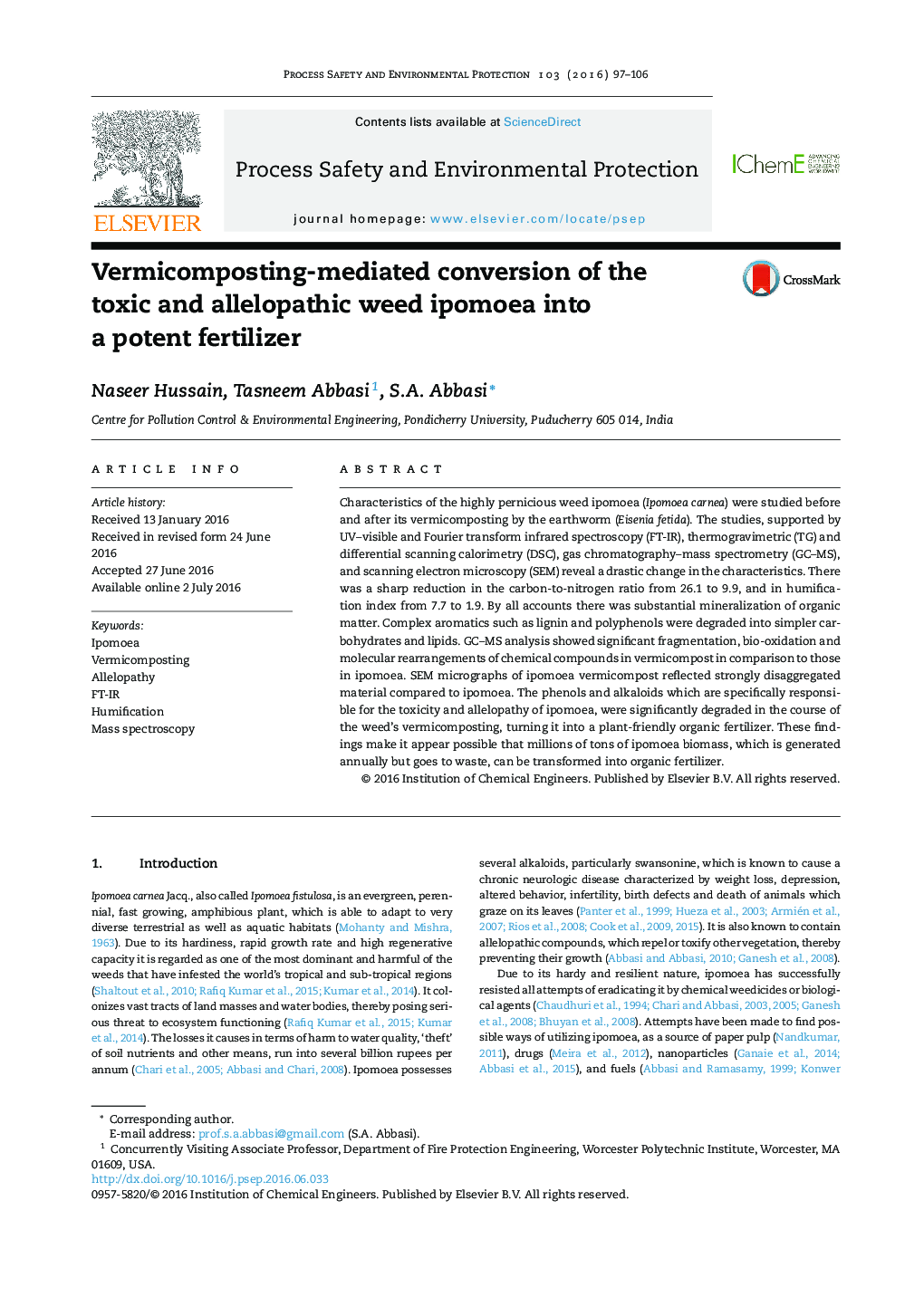| کد مقاله | کد نشریه | سال انتشار | مقاله انگلیسی | نسخه تمام متن |
|---|---|---|---|---|
| 4980901 | 1367843 | 2016 | 10 صفحه PDF | دانلود رایگان |
عنوان انگلیسی مقاله ISI
Vermicomposting-mediated conversion of the toxic and allelopathic weed ipomoea into a potent fertilizer
دانلود مقاله + سفارش ترجمه
دانلود مقاله ISI انگلیسی
رایگان برای ایرانیان
کلمات کلیدی
موضوعات مرتبط
مهندسی و علوم پایه
مهندسی شیمی
بهداشت و امنیت شیمی
پیش نمایش صفحه اول مقاله

چکیده انگلیسی
Characteristics of the highly pernicious weed ipomoea (Ipomoea carnea) were studied before and after its vermicomposting by the earthworm (Eisenia fetida). The studies, supported by UV-visible and Fourier transform infrared spectroscopy (FT-IR), thermogravimetric (TG) and differential scanning calorimetry (DSC), gas chromatography-mass spectrometry (GC-MS), and scanning electron microscopy (SEM) reveal a drastic change in the characteristics. There was a sharp reduction in the carbon-to-nitrogen ratio from 26.1 to 9.9, and in humification index from 7.7 to 1.9. By all accounts there was substantial mineralization of organic matter. Complex aromatics such as lignin and polyphenols were degraded into simpler carbohydrates and lipids. GC-MS analysis showed significant fragmentation, bio-oxidation and molecular rearrangements of chemical compounds in vermicompost in comparison to those in ipomoea. SEM micrographs of ipomoea vermicompost reflected strongly disaggregated material compared to ipomoea. The phenols and alkaloids which are specifically responsible for the toxicity and allelopathy of ipomoea, were significantly degraded in the course of the weed's vermicomposting, turning it into a plant-friendly organic fertilizer. These findings make it appear possible that millions of tons of ipomoea biomass, which is generated annually but goes to waste, can be transformed into organic fertilizer.
ناشر
Database: Elsevier - ScienceDirect (ساینس دایرکت)
Journal: Process Safety and Environmental Protection - Volume 103, Part A, September 2016, Pages 97-106
Journal: Process Safety and Environmental Protection - Volume 103, Part A, September 2016, Pages 97-106
نویسندگان
Naseer Hussain, Tasneem Abbasi, S.A. Abbasi,